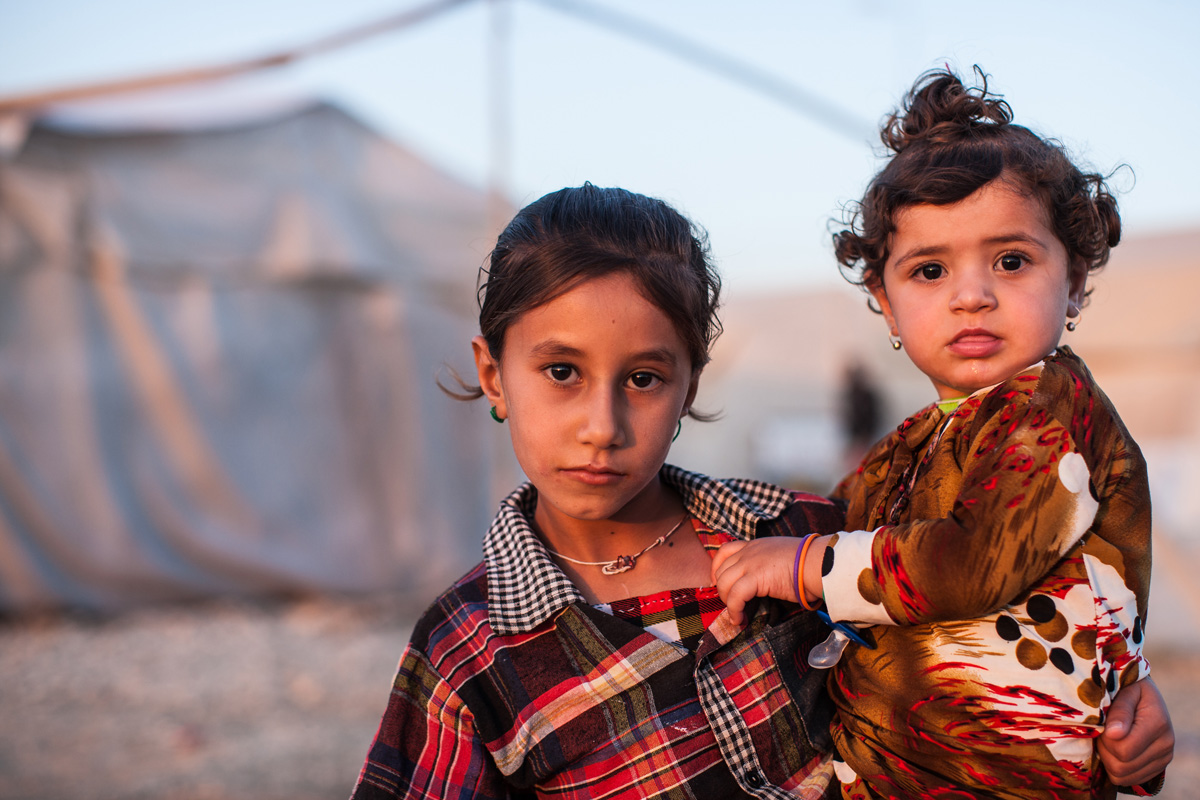In the summer of 2014, the self-proclaimed Islamic State (IS) carried out a violent campaign against civilians across northern Iraq, home to many of Iraq’s ethnic and religious minorities. The attacks were just the latest crimes against communities repeatedly subjected to violence for decades.
The US Holocaust Memorial Museum’s Simon-Skjodt Center for the Prevention of Genocide documented IS’ path of destruction through Ninewa province and its crimes against Christian, Yezidi, Turkmen, Shabak, Sabaean-Mandaean, and Kaka’i minority populations between June and August 2014 in its 2015 report "Our Generation Is Gone: The Islamic State’s Targeting of Iraqi Minorities in Ninewa."
In March 2016, the US government determined that IS perpetrated genocide and crimes against humanity against minorities in northern Iraq.
In October 2016, a coalition of forces launched an offensive to drive the Islamic State (IS), a perpetrator of genocide and a terrorist group, from its foothold in Iraq and Syria. By December 2017, IS had been forced from Mosul and surrounding areas in Ninewa, in northern Iraq. By early 2019, the coalition announced the complete territorial defeat of IS.
Though the Islamic State no longer controls large swathes of territory in Iraq, the Simon-Skjodt Center has warned that religious minorities and other civilians remain at risk and could face further atrocities in the future.
Long-standing territorial disputes, sectarian tensions existing prior to the Islamic State, and the large number of armed militias create a high risk for successor extremist groups, revenge killings against Sunni Arabs, and continued violence against religious and ethnic minorities by a weakened Islamic State.
In its report, "Communities At Risk: Protecting Civilians in the Fight Against the Islamic State," the Simon-Skjodt Center lays out strategies to protect targeted groups and counter the political climate and lack of stability that allowed IS to flourish.
Fear
The Islamic State Sows Terror
As IS rampaged through northern Iraq, it capitalized on fear—fear of attack, fear of kidnapping, fear of sexual violence, fear of death. Fear drove people from their homes and helped IS control the areas once occupied.

Displaced Iraqis wait to receive food at a camp in Erbil. —Mackenzie Knowles-Coursin for the US Holocaust Memorial Museum
Flight
Forced from Their Homes
Many of the people targeted by the self-proclaimed Islamic State (IS) had lived in the same areas all their lives; in many cases, their families had been there for centuries. Overnight, they were driven from their homes and villages by IS, forced to flee their businesses, their houses of worship, their families and friends, the social fabric of their lives. Clutching only their most essential possessions, clinging to families that, for some, had been splintered by kidnappings and killings, the fleeing Iraqis moved from place to place in search of safe haven.

A group of displaced Iraqis at a camp near Erbil. —Mackenzie Knowles-Coursin for the US Holocaust Memorial Museum
Devastation
Communities—and People—Are Gone
The plight of the Iraqi minorities was a tragedy on multiple levels. In at least one case, hundreds of residents of a village were killed by fighters of the self-proclaimed Islamic State (IS). IS fighters captured and enslaved women and girls, notably from the Yezidi community. Some women and girls, including those from the Sunni community, were subjected to forced marriages to IS fighters. Young boys were forcibly recruited, indoctrinated, and forced to fight as part of IS forces. In many other cases, people were driven from their homes, their businesses, their friends, and their houses of worship and forced to begin again. In effect, IS uprooted their cultures and communities. Years later, many of the areas attacked by IS remain insecure, preventing people from returning to rebuild.

A Sunni man prays as the sun sets over a displaced-persons camp outside Erbil. —Mackenzie Knowles-Coursin for the US Holocaust Memorial Museum
Displacement
Clinging to Identity
Practically overnight, comfortable lives came to an end, torn irrevocably. Uprooted from their homes, businesses, and communities, the people of northern Iraq have found themselves living in horrible, strange conditions, trying to make the best of a world that has been changed by mass violence.

An elderly Yezidi woman tends to a number of young children beside the half-constructed building in which they live in Duhok. —Mackenzie Knowles-Coursin for the US Holocaust Memorial Museum



















Share